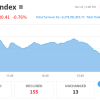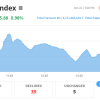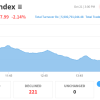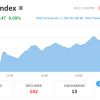Introduction to NEPSE and Investment
Investing in the stock market allows individuals to grow their savings and generate returns. The Nepal Stock Exchange (NEPSE) provides a platform for trading shares of listed companies in Nepal. This article covers the essentials of starting your investment journey in NEPSE, from creating a DEMAT account to analyzing risks and understanding the trading process.
Getting Started: Creating a DEMAT Account and Bank Account
- Open a Bank Account:
- To trade on NEPSE, you need a bank account to facilitate the transfer of funds.
- Choose a bank that offers good customer service and has a solid reputation in the market.
- Create a DEMAT Account:
- A DEMAT (Dematerialized) account is essential for holding shares in electronic form.
- Visit a Depository Participant (DP), usually offered by banks and brokerage firms, to open a DEMAT account.
- Submit the required documents: identity proof, address proof, and recent passport-sized photographs.
- Linking Bank and DEMAT Accounts:
- Ensure your bank account is linked to your DEMAT account for seamless fund transfers.
- Register with CDSC and C-ASBA:
- The Central Depository System and Clearing (CDSC) manages your DEMAT account.
- Register with the C-ASBA (Centralized Application Supported by Blocked Amount) system for applying in IPOs (Initial Public Offerings).
Trading Management System (TMS)
- Choosing a Broker:
- Select a licensed broker registered with SEBON (Securities Board of Nepal).
- Brokers facilitate the buying and selling of shares on your behalf.
- TMS Registration:
- Register for the Trading Management System (TMS) provided by your broker.
- TMS allows you to place buy/sell orders, view your portfolio, and track market movements online.
- Trading Process:
- Placing Orders: Use the TMS platform to place buy or sell orders. Specify the number of shares and the price at which you want to trade.
- Order Execution: Orders are executed based on market conditions. A buy order matches with a sell order and vice versa.
- Settlement: Once the trade is executed, the shares are credited or debited to your DEMAT account, and funds are transferred accordingly.
Risks and Analysis in Stock Trading
- Market Risks:
- Stock prices are influenced by market conditions, economic factors, and company performance.
- Prices may fluctuate, leading to potential gains or losses.
- Credit Risk:
- Risk of a company defaulting on its financial obligations, affecting its stock price.
- Liquidity Risk:
- Difficulty in buying or selling shares without affecting the stock price due to low trading volumes.
- Systematic and Unsystematic Risks:
- Systematic Risk: Market-wide risks that cannot be mitigated (e.g., economic downturns).
- Unsystematic Risk: Company-specific risks that can be reduced through diversification.
- Technical and Fundamental Analysis:
- Technical Analysis: Analyzing stock price movements and trading volumes using charts and technical indicators.
- Fundamental Analysis: Evaluating a company’s financial health, performance metrics, and growth potential.
Tips for New Investors
- Start Early:
- The sooner you start investing, the more time your investments have to grow.
- Benefit from the compounding effect by reinvesting your returns.
- Invest Regularly:
- Make consistent investments, irrespective of market conditions, to average out costs and reduce risk.
- Long-Term Perspective:
- Focus on long-term investments rather than short-term gains to mitigate market volatility.
- Diversify Your Portfolio:
- Spread your investments across various sectors and asset classes to minimize risk.
- Stay Informed:
- Keep up with market news, economic indicators, and company performance to make informed investment decisions.
- Understand the Basics:
- Learn stock market terminology and trading processes. Familiarize yourself with market indices, trading terms, and regulatory frameworks.
Conclusion
Investing in NEPSE can be a rewarding experience if approached with the right knowledge and strategy. By creating a DEMAT account, understanding the trading process, and analyzing risks, you can make informed decisions and achieve your financial goals. Always remember to stay informed and continuously educate yourself about market trends and investment strategies.








